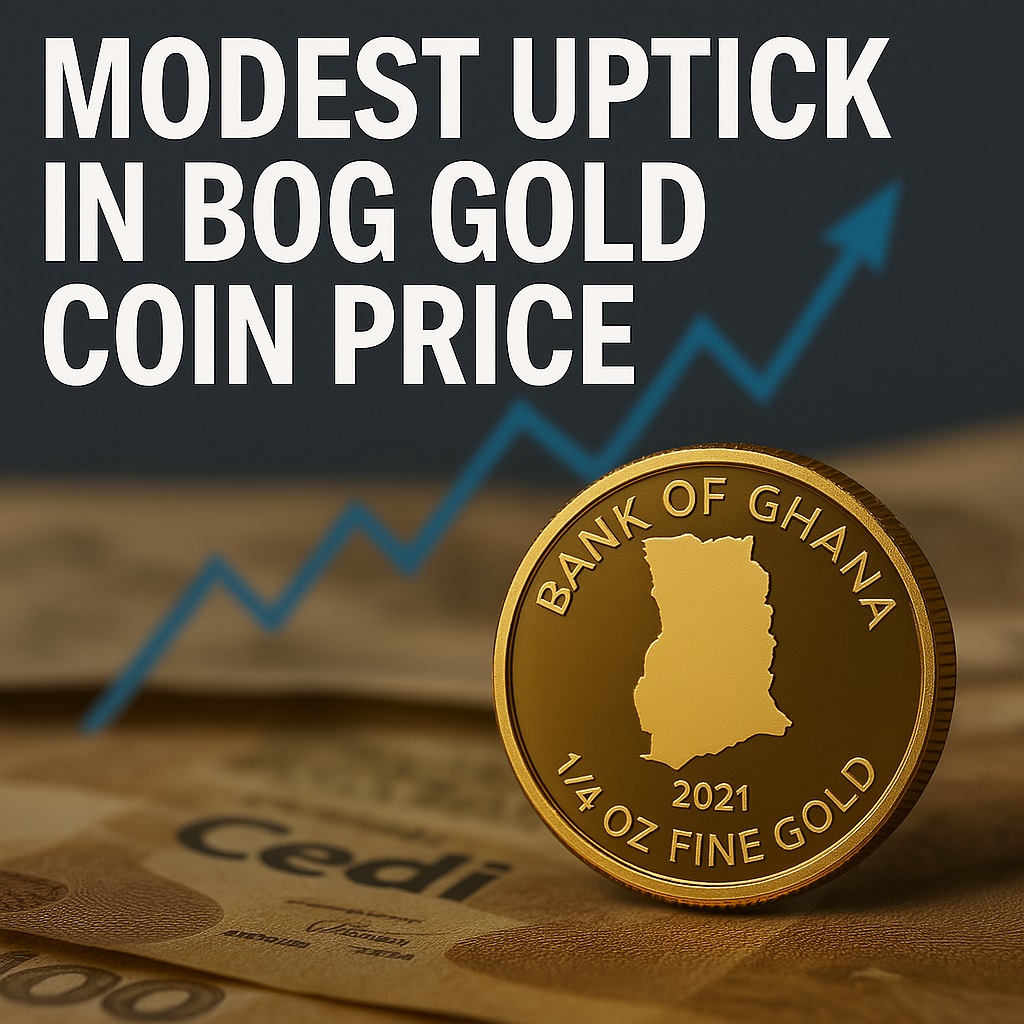Modest Uptick in BoG Gold Coin Price Signals Renewed Confidence in Cedi

The price of Ghana’s quarter-ounce gold coin, introduced by the Bank of Ghana (BoG) as a symbolic asset of national value, has edged upward to GH¢9,720.37. This quiet gain, although slight, offers a telling glimpse into the growing resilience of the local currency and the confidence it’s beginning to inspire within investment circles.
The BoG announced the new rate on Sunday, drawing attention from economic observers who see this price movement as more than just a reaction to bullion value—it’s a subtle economic indicator. The upward revision reflects both rising investor interest and a strengthening cedi, which has made cautious but notable gains against the U.S. dollar in recent weeks.
Financial analyst and metals trader Kojo Nketia believes the development points to renewed economic optimism: > “When gold coin values adjust like this, it signals shifting sentiment. The coin’s not merely ornamental—it has become a useful barometer of fiscal mood.”
Originally minted in 2021 to commemorate Ghana’s commitment to sound economic governance, the BoG’s gold coin is not legal tender but rather a store of value. Encased in luxury packaging and stamped with the Bank’s insignia alongside a gilded map of Ghana, the coin has become a coveted item among investors and collectors alike. Its premium appeal offers both a hedge against inflation and a physical emblem of economic pride.
The current upward revision is rooted in stronger economic fundamentals. The Ghanaian cedi has appreciated approximately 0.8% against the U.S. dollar over the past month—a movement attributed to improved foreign exchange inflows, especially from cocoa exports and a bump in international remittances. Though modest, this stability has given monetary authorities more room to breathe after turbulent periods earlier this year.
Gold’s performance on the global market has also influenced pricing. With international prices hovering above $2,400 per ounce due to persistent geopolitical risks, national pricing strategies are being recalibrated to stay competitive while guarding national reserves.
Domestic uptake for the coin remains steady, particularly among elite buyers and financial institutions seeking long-term store-of-value assets. Jewelry dealers and commodity brokers have also expressed growing interest, citing both cultural affinity and profit potential.
Despite its exclusivity, the coin has triggered wider conversations about wealth accessibility and monetary symbolism in Ghana. Some have called for broader public engagement with such financial tools, perhaps through scaled-down investment products or gold savings accounts.
As macroeconomic indicators continue to evolve, the trajectory of the BoG’s gold coin will be one to watch. It serves not just as a collector’s item, but as a mirror of economic pulse—a finely struck reminder that trust in a currency is built not only in policies, but in symbols that reflect them.



0 Comments
No comments yet, be the first to comment